Power Automate Add Attendee To Meeting And Don’t Email Others

In Power Automate you can add a new attendee to a meeting without emailing all current attendees. The trick is to do it with an Outlook – Send An HTTP request action. If you try to use the Outlook – Update Event action instead everyone will get a message about the meeting changes.
Introduction: The Add An Attendee To A Meeting Flow
A Power Automate flow is used to add an attendee to an existing meeting.
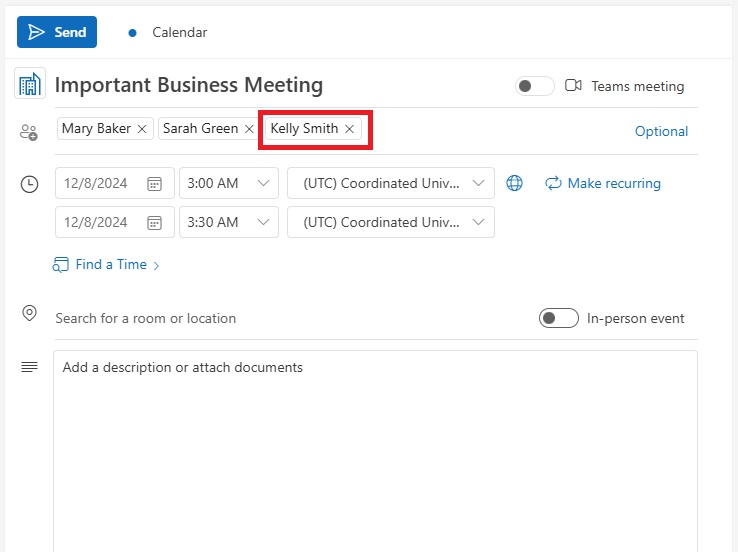
The meeting update only notifies the person who was added to the meeting. Other meeting attendees do not receive a notification.

Create A New Meeting In Outlook
Our Power Automate flow will add an attendee to an existing meeting. Open Outlook and add a new meeting to the personal calendar titled “Important Business Meeting.” Then add attendees to the meeting, select a start and end time and send the meeting invite.
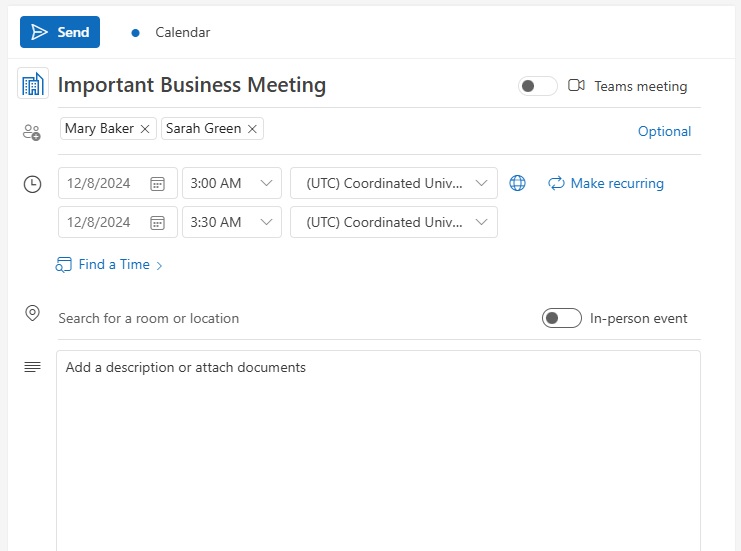
Get The Meeting Calendar ID and Event ID
To update a meeting with a new attendee we must know its Calendar ID and Event ID. Create a new instant flow in Power Automate and insert an Office 365 Outlook – Get Events (V4) action. Select the calendar id named Calendar. Ensure the action only returns one result by setting the Top Count equal to 1.
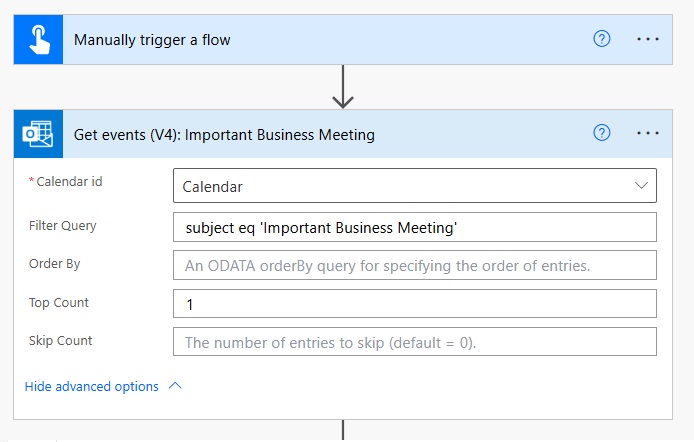
Use this Filter Query with the title of the meeting.
subject eq 'Important Business Meeting'Code language: JavaScript (javascript)
The Get Events (V4) action returns the Event ID in the body of the outputs.
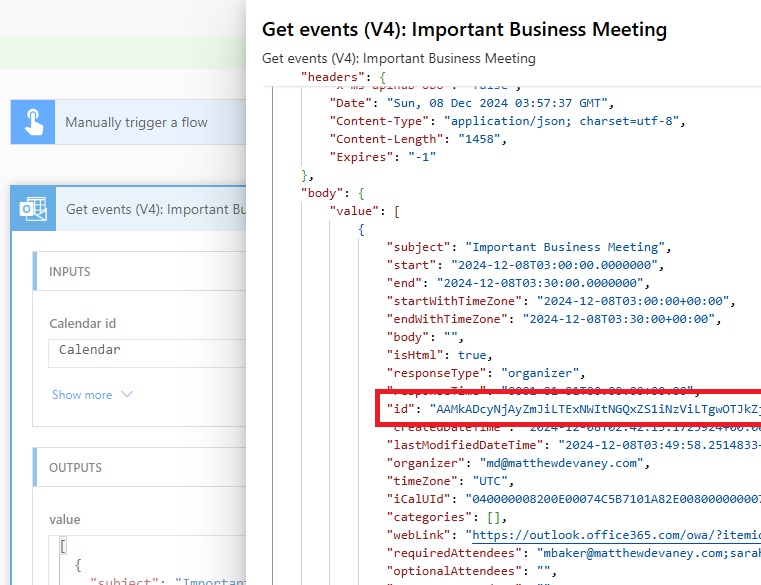
The Calendar ID can be found in the table parameter of the action inputs.
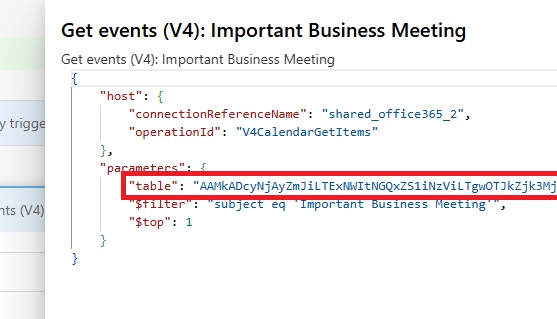
Store Calendar ID And Event ID In Variables
We will use the Calendar ID and the Event ID many times throughout the flow so it is a good idea to store their values in variables. Create two new string variables named varCalendarId and varEventId.

Set varCalendarId using this expression. The actions function returns the input parameters. The table property holds the Calendar’s unique id.
actions('Get_events_(V4):_Important_Business_Meeting')?['inputs']?['parameters']?['table']Code language: JavaScript (javascript)
Use this expression to populate the varEventId variable.
first(body('Get_events_(V4):_Important_Business_Meeting')?['value'])?['id']Code language: JavaScript (javascript)
Send An HTTP Request To Get The Meeting From Outlook
To update the calendar with a new attendee we must get the current list of attendees and add the new attendee to it. Insert an Office 365 Outlook – Send An HTTP Request action to the flow and get the event using the Microsoft Graph API.
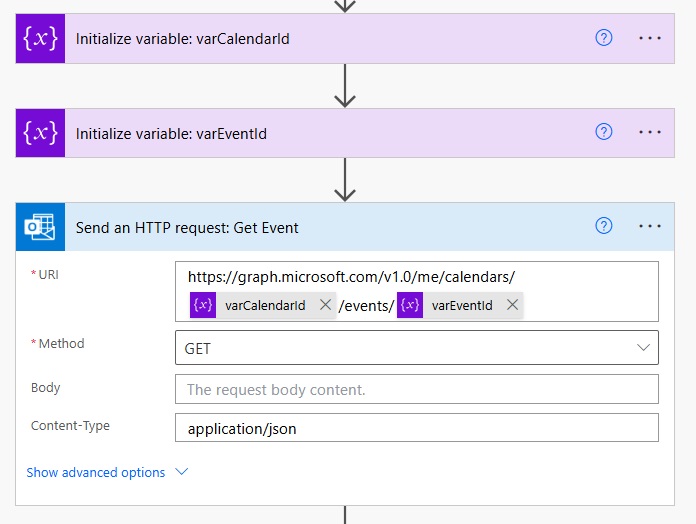
Write this URI in the Send An HTTP request action URI field.
https://graph.microsoft.com/v1.0/me/calendars/@{variables('varCalendarId')}/events/@{variables('varEventId')}Code language: JavaScript (javascript)
Use the GET Method to read the event data.
GET
Include this Content-Type to return the response in a JSON format.
application/json
The Send An HTTP request action returns the attendees list in the attendees property of the body along with their meeting response status (none, accepted, declined) and invite type (required, optional).
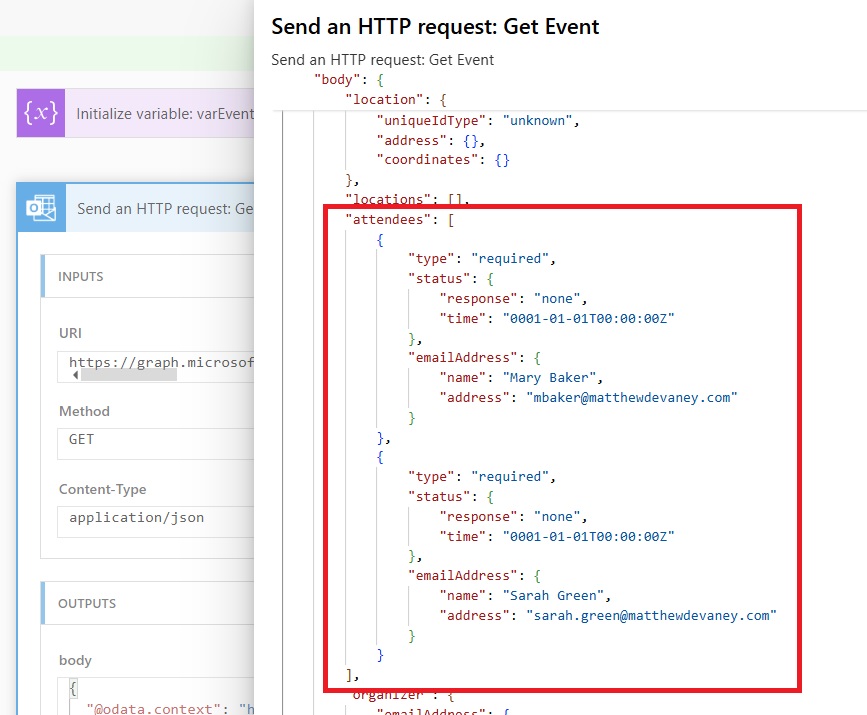
Add The Attendee To The Meeting Attendees List
The easiest way to add the new attendee to the meeting is to store the attendees list in an array and append another attendee object. Insert an Initialize Variable action to the flow and name the variable varAttendees. Choose the type Array.
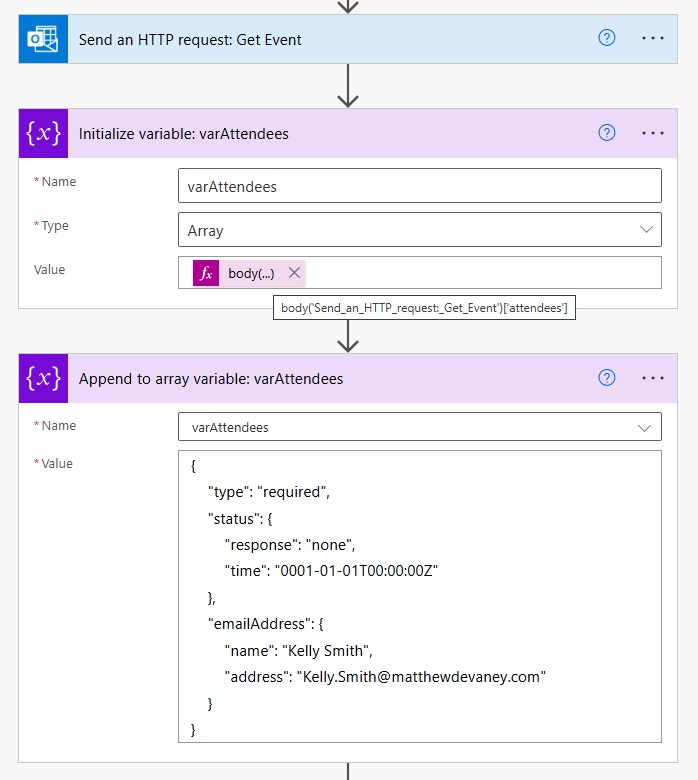
Use this expression in the Initialize Variable Value field to store the attendees list as an array.
body('Send_an_HTTP_request:_Get_Event')['attendees']Code language: JavaScript (javascript)
Add an Append To Array Variable action to the flow, select the varAttendees variable and write this code in the Value field. Set the name property to the full name of the new attendee and set the address property to their email address.
{
"type": "required",
"status": {
"response": "none",
"time": "0001-01-01T00:00:00Z"
},
"emailAddress": {
"name": "Kelly Smith",
"address": "[email protected]"
}
}Code language: JSON / JSON with Comments (json)
Update The Meeting With A New Attendees List
With an updated attendees list in varAttendees we can now use it to update the meeting event. Add another Office 365 Outlook – Send An HTTP Request action to the flow.

Use the same URI for the Update Event action as the Get Event action.
https://graph.microsoft.com/v1.0/me/calendars/@{variables('varCalendarId')}/events/@{variables('varEventId')}Code language: JavaScript (javascript)
Select the PATCH Method to make an update to an existing meeting record.
PATCH
Update the meeting with a new attendees list by using this JSON in the Body.
{
"attendees":@{ variables('varAttendees')
}Code language: JavaScript (javascript)
Define the action inputs and outputs as JSON formatted with this code in the Content-Type field.
application/json
Run The Power Automate Flow To Add A New Meeting Attendee
We are done. Test the new flow to ensure it can add a new meeting attendee without notifying other attendees.
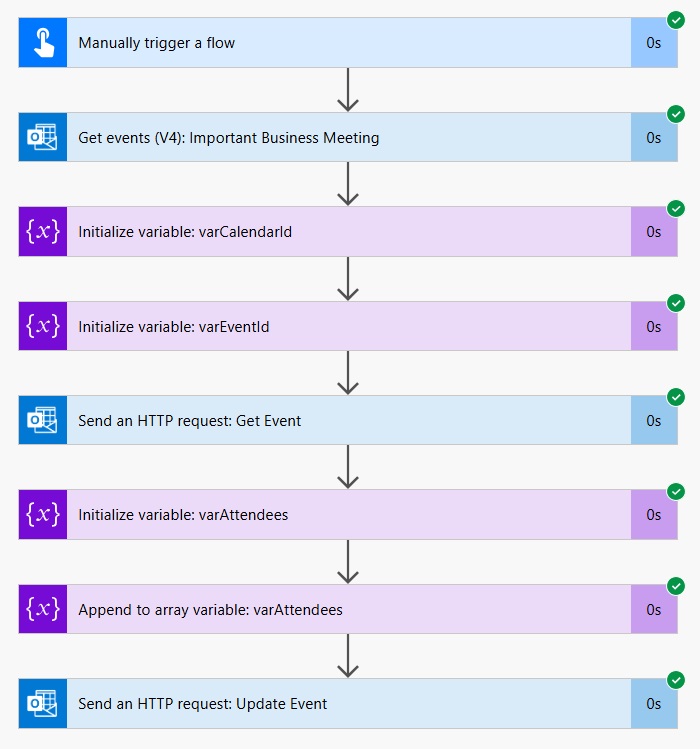
The new attendee Kelly Smith is added to the meeting.

Only Kelly Smith is sent a message in Outlook when they are added to the meeting.
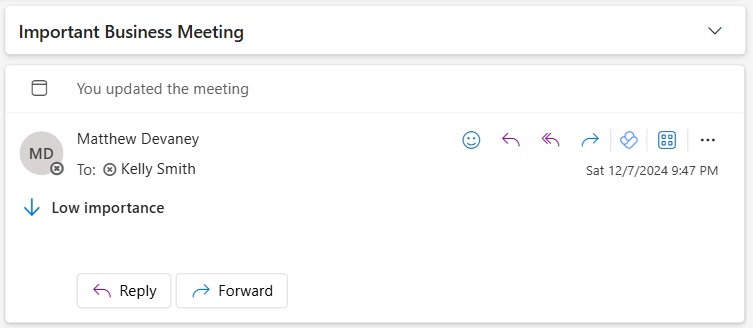
Complete Power Automate Flow Actions Image
Here is a full screenshot of the completed Power Automate flow.

Did You Enjoy This Article? 😺
Subscribe to get new Copilot Studio articles sent to your inbox each week for FREE
Questions?
If you have any questions or feedback about Power Automate Add Attendee To Meeting And Don’t Email Others please leave a message in the comments section below. You can post using your email address and are not required to create an account to join the discussion.






This is really great! Thank you Matthew for sharing
I love this flow. I am using it to edit a master series and add attendees. However, the attendees get two email notifications, not sure why the duplication.
Looks awesome 🙂 Do you maybe know if same works for Teams Meetings?
Should be the same thing
Love this, thank you!
Nice. Confusing: When you use the Create a Teams action and look at the input, the Calendarid contains the name of the Calendar, not the long HEX string.
It is not quite clear why this method does not send an update to everyone, but only to added or deleted people, or what you can do if you want to send the update to everyone with this method. It now helped me to fulfil to make the invitation nicer. Forwarding an invitation is an alternative but has the downside that it confusingly shows UTC time.
Do you know if this can work for a meeting series? Specifically, adding someone to all future events in a series?
Thank you Matthew, this was exactly the solution I needed! I appreciate the attention to detail – including the screenshots and code blocks – to make it easy to replicate.